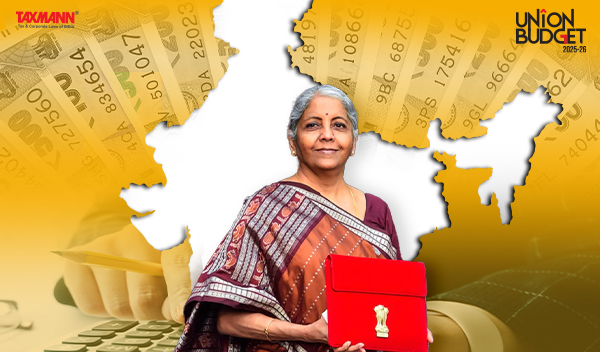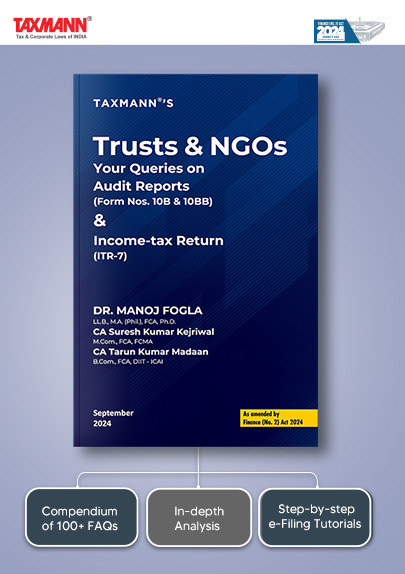[Opinion] Budget 2025 | Achievements of the Modi Government in Reforming the Income Tax Regime in India
- Blog|News|Income Tax|
- 2 Min Read
- By Taxmann
- |
- Last Updated on 9 February, 2025
Dr B Ramaswamy – [2025] 171 taxmann.com 166 (Article)
1. Abstract
The Modi government has implemented significant reforms to India’s income tax regime, focusing on simplification, reduced corporate tax rates, increased transparency through faceless assessments, and digitalization for easier compliance. Recent budgets have furthered these efforts by offering a simplified new tax regime with lower rates, increasing tax audit thresholds, and promoting digital transactions. Its upcoming plans include a new, concise Income Tax Bill, updated crypto asset regulations, and measures to streamline international tax compliance and merger approvals. These reforms aim to boost investment, improve tax compliance, and modernize the tax system, ultimately contributing to India’s economic growth.
2. Key Words
Income Tax, Central Board of Direct Taxes (CBDT), Corporate Tax, Tax Audits, Budget, TDS (Tax Deducted at Source), Tax Collected at Source (TCS), Long-Term Capital Gains (LTCG), FY (Financial Year), Assessing Officer (AO), Goods and Services Tax (GST)
3. Introduction
The income tax system in India is a progressive tax regime administered by the Central Government under the framework of the Income Tax Act of 1961. Income tax is levied on the income earned by individuals, Hindu Undivided Families (HUFs), firms, companies, and other entities. The system is designed to ensure equitable distribution of wealth and to generate revenue for the development and welfare of the country.
The administration and collection of income tax are overseen by the Central Board of Direct Taxes (CBDT), which operates under the Department of Revenue in the Ministry of Finance. The tax collected is utilized to fund government initiatives, public services, infrastructure projects, and social welfare schemes.
Income is taxed based on the residential status of the taxpayer and the nature of the income earned. The tax structure includes various heads of income such as salaries, house property, business or profession, capital gains, and other sources. Taxpayers are provided with deductions, exemptions, and rebates to encourage savings and investments.
India’s income tax system has undergone significant reforms over the years to enhance compliance, simplify procedures, and widen the tax base. With the advent of digital technologies, the government has introduced measures like e-filing of tax returns, faceless assessments, and real-time processing to improve efficiency and transparency in tax administration.
The constitutional framework empowers both the Central and State Governments to levy taxes; however, income tax (excluding agricultural income) falls under the exclusive purview of the Central Government. Agricultural income is taxed by State Governments as per their respective legislations.
The role of income tax in nation-building is paramount, as it is a major source of revenue that supports economic growth, social equity, and the provision of essential services to citizens. As India continues to evolve as a global economic power, its income tax system remains a critical tool for fostering sustainable development and financial inclusion.
Click Here To Read The Full Article
Disclaimer: The content/information published on the website is only for general information of the user and shall not be construed as legal advice. While the Taxmann has exercised reasonable efforts to ensure the veracity of information/content published, Taxmann shall be under no liability in any manner whatsoever for incorrect information, if any.

Taxmann Publications has a dedicated in-house Research & Editorial Team. This team consists of a team of Chartered Accountants, Company Secretaries, and Lawyers. This team works under the guidance and supervision of editor-in-chief Mr Rakesh Bhargava.
The Research and Editorial Team is responsible for developing reliable and accurate content for the readers. The team follows the six-sigma approach to achieve the benchmark of zero error in its publications and research platforms. The team ensures that the following publication guidelines are thoroughly followed while developing the content:
- The statutory material is obtained only from the authorized and reliable sources
- All the latest developments in the judicial and legislative fields are covered
- Prepare the analytical write-ups on current, controversial, and important issues to help the readers to understand the concept and its implications
- Every content published by Taxmann is complete, accurate and lucid
- All evidence-based statements are supported with proper reference to Section, Circular No., Notification No. or citations
- The golden rules of grammar, style and consistency are thoroughly followed
- Font and size that’s easy to read and remain consistent across all imprint and digital publications are applied






 CA | CS | CMA
CA | CS | CMA


